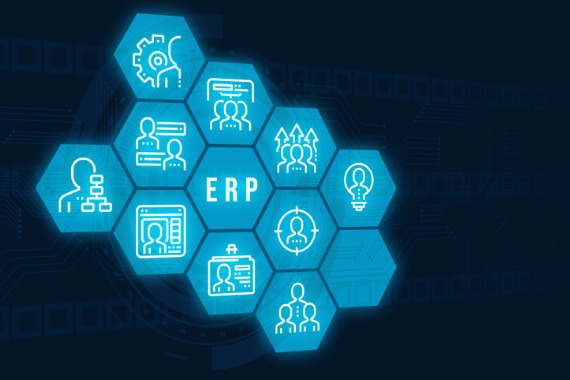What if we told you about a technology solution that allowed companies to avoid $10.6 million in legacy costs while improving operational efficiency by $39 million?
Enterprise Resource Planning is the software system that helps businesses manage their resources, including finances, production, and human resources.
Companies of all sizes implement operation-enhancing technology systems to stay competitive, increase efficiency and save businesses time and money.
But WAIT! Isn’t ERP also the technology that collectively leads some companies to waste billions of dollars every year?
In one example, Hershey lost over $100 million by implementing multiple ERPs from three different vendors. In another example, Germany’s international grocery chain, Lidl, failed to implement one of these, costing the company over $580 million and seven development years.
How can it be both? You see, it’s not an ERP problem. If it were and ERP problem, no companies would implement them. Instead, it’s a requirements-gathering problem. Once you know your requirements, you can choose the right solution.
What is ERP?
Many companies use ERP software to manage and automate day-to-day business processes, including:
- sales
- quoting
- accounting
- inventory
- and more
As a consolidated business system for gathering and organizing a company’s data through integrated applications, ERP automates business functions like:
- production
- procurement
- project management
- risk management
- compliance
- supply chain
- and other essential operations
These systems provide real-time insights, improve customer service and analyze an organization’s financial health.
What are the primary benefits of selecting the right ERP system?
The primary benefits of choosing the right ERP system include:
- Increased efficiency and productivity – The right ERP system can help automate business processes, leading to increased efficiency and productivity.
- Improved decision-making – The right ERP system can provide managers with timely and accurate information, which can help them make better decisions.
- Reduced costs – The right ERP system can help organizations streamline operations, reducing costs.
To choose the right system, you must have a software selection process. That’s where your ERP selection criteria checklist comes in handy to foster project success.
ERP Selection Process
When selecting the right ERP system for your business, the list of considerations is long, but your software selection process ensures no stone is left unturned.
Some of the critical items to consider to keep you out of trouble during your software selection process include:
Select an internal team
An ERP system will significantly impact your entire organization, so careful thought should go into assembling your ERP evaluation team. You’ll need an internal group of stakeholders to help determine the proper requirements for the whole ERP implementation process.
To avoid ERP implementation failure, remember to include representatives from each department. Careful thought should go into assembling your ERP evaluation team.
Ensure the team consists of top managers, department heads, and project managers. A c-suite sponsor helps too.
Gather organizational requirements
It’s important to identify the essential requirements for your business and take your time because poor ERP planning can cost you. Your internal evaluation team should organize meetings with their respective teams and departments to gather the needs of the entire organization. Each department should determine its objectives, the ERP functionalities they need, and how to use these features.
Specify the specifications of your desired ERP system
Once every department has identified its unique ERP needs, the internal evaluation team should reconvene and determine the specific functionalities they need in an ERP system. The primary functions you need include distribution, inventory, procurement, finance, eCommerce, manufacturing, marketing automation, and various management functions.
Identify the vendor services you need
List the support you need from your vendors, like whether you need a project manager or consultant. Remember that the cost of ownership also differs based on vendor services.
Calculate costs and timeline
Identify your budgeted resources to purchase and implement your ERP system. The timeline includes the period it will take to evaluate the system, get demonstrations, implement, and train your entire organization.
As with most substantial technology upgrades, the cost of a new ERP system is a driving factor. ERP pricing has gotten somewhat complex due to several factors, including deployment options and add-on options.
Here are some standard ERP costs to consider:
- Software implementation
- Annual maintenance fees (software updates and upgrades)
- Support (annual, hourly, or tier)
- Training
- Hardware
- Technology requirements
- Additional licenses and renewals
Forecast your ROI
Now that you know the needs, functionalities, and vendor services you want, identify your projected ROI with a schedule. Remember to determine the total cost of ownership.
Start by appreciating the actual value of ERP by factoring in both Return on Investment (ROI) and Total Cost of Ownership (TCO).
Most teams make the mistake of focusing on the upfront investment. Identify long-term and recurring expenses. Take a close look at support and training. Pricing for these can be tough to estimate, but it can significantly differ between each system’s lifetime costs.
Shortlist your vendors
Determine the best ERP vendors in your industry and make a shortlist of the best and send a request for their proposals.
Your software vendor is your partner in getting what you need from this technology upgrade, so make your decision only after thoroughly vetting your vendor options. Working with an established vendor who understands your specific needs and appropriately addresses them is essential.
As a small to midsize company, staying up-to-date with modern business technologies is standard fare when you’re looking to stay ahead. Whether you’re increasing efficiency, improving the bottom line, or streamlining operations, you have every reason to consider Enterprise Resource Planning (ERP) for your business transformation.
The Best Approach
Your new ERP will serve as your company’s backbone and change your business’s trajectory. Selecting an ERP vendor is a critical first step in implementing this foundation. Once you’ve identified an ERP vendor offering your preferred ERP solution with a proven track record in your industry and a delivery model that suits your company’s technical infrastructure, make your decision!
If it’s time to talk to us, we’re ready to learn about your organization and its unique business requirements.
FAQs
Why is it essential to create selection criteria before purchasing an ERP system?
Many companies have experienced severe losses from choosing and implementing the wrong ERP system. A selection criterion helps you choose one that fits your company’s needs.
Do you need a checklist?
Not necessarily, but it is important because it ensures you fulfill every necessary implementation process.
What criteria should I use to select an ERP system?
First, create an internal team to evaluate the businesses’ needs and match them to the right ERP choice. Then identify those company needs and look for the right ERP solution in your industry that fits your budget and implementation timeline.



